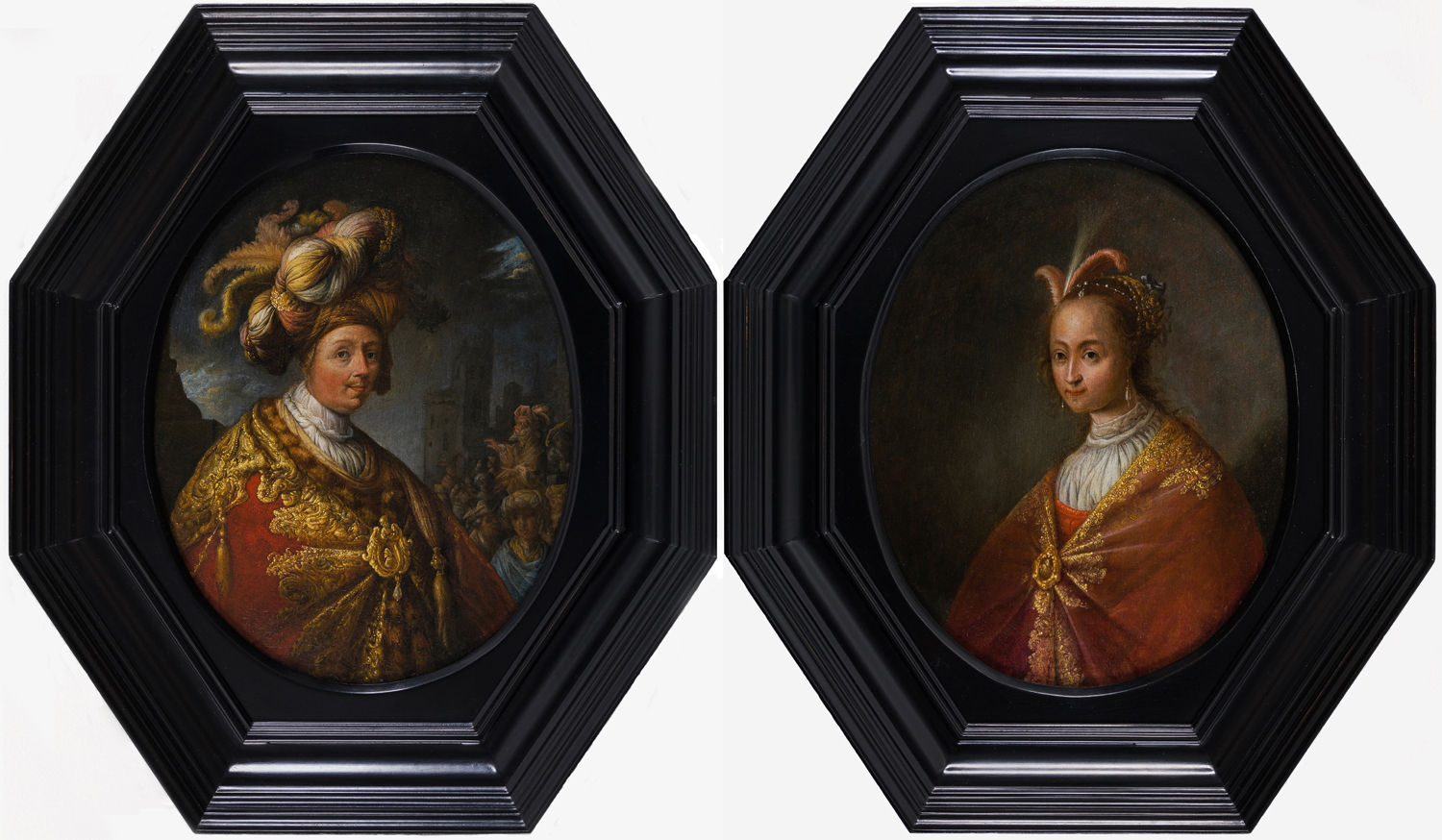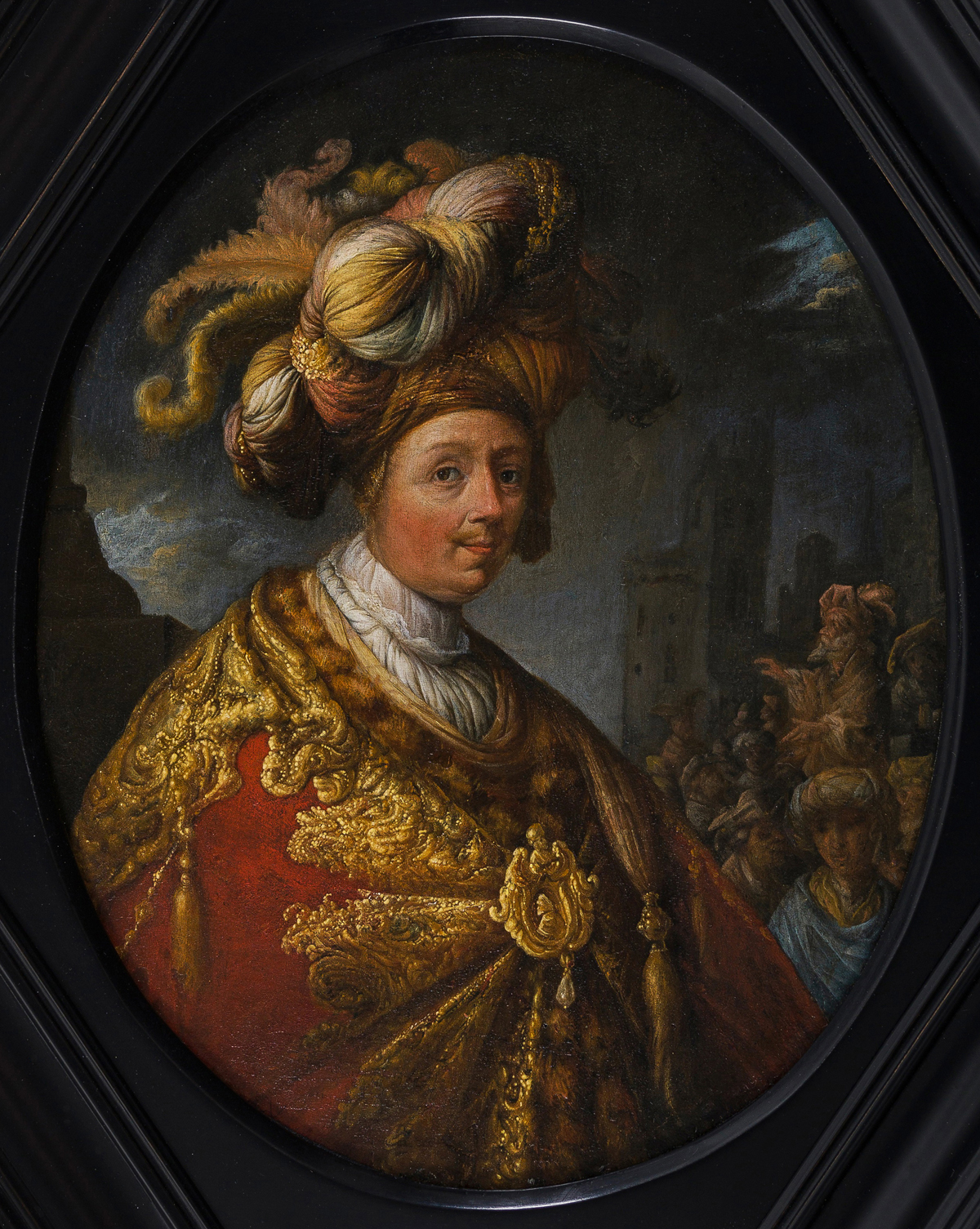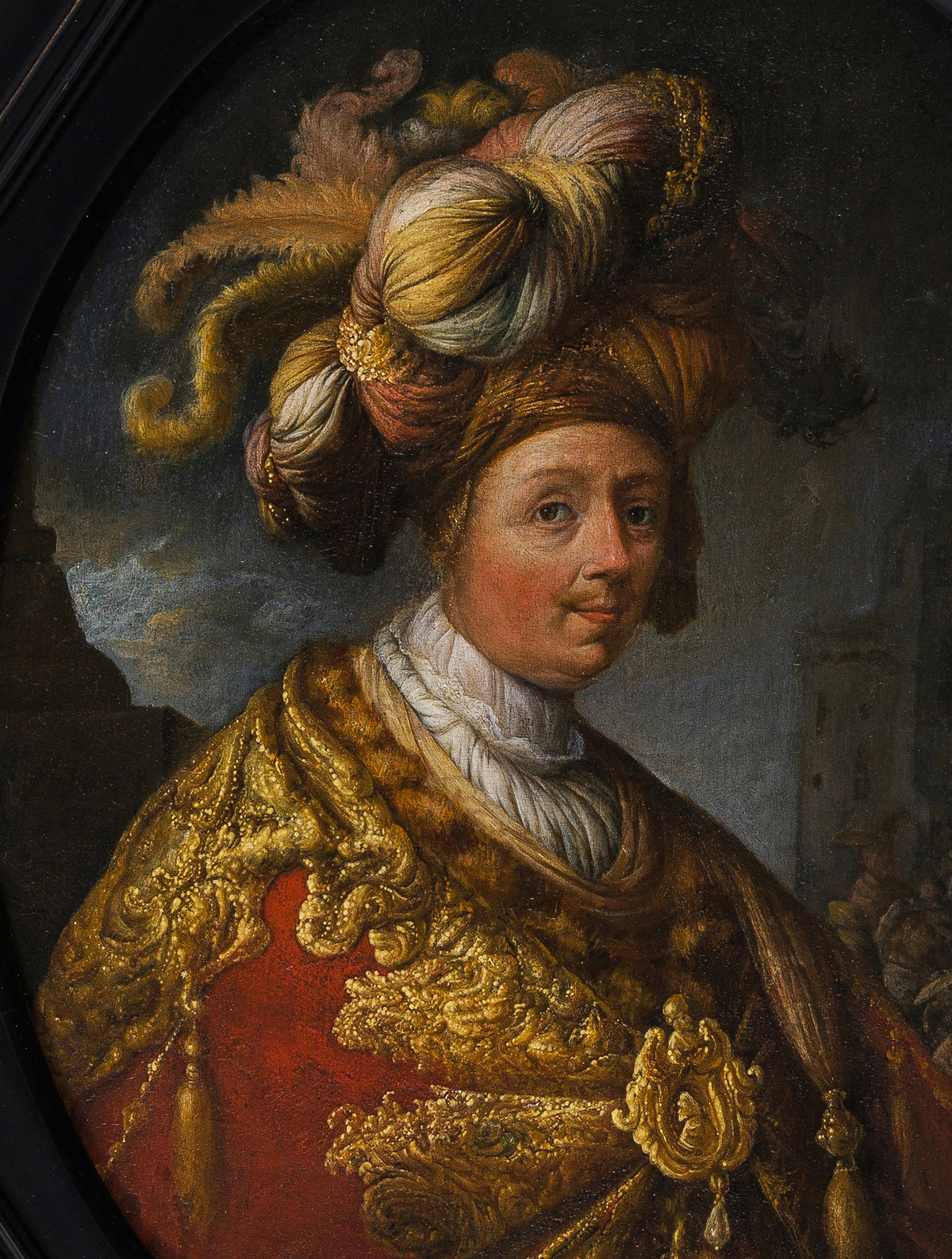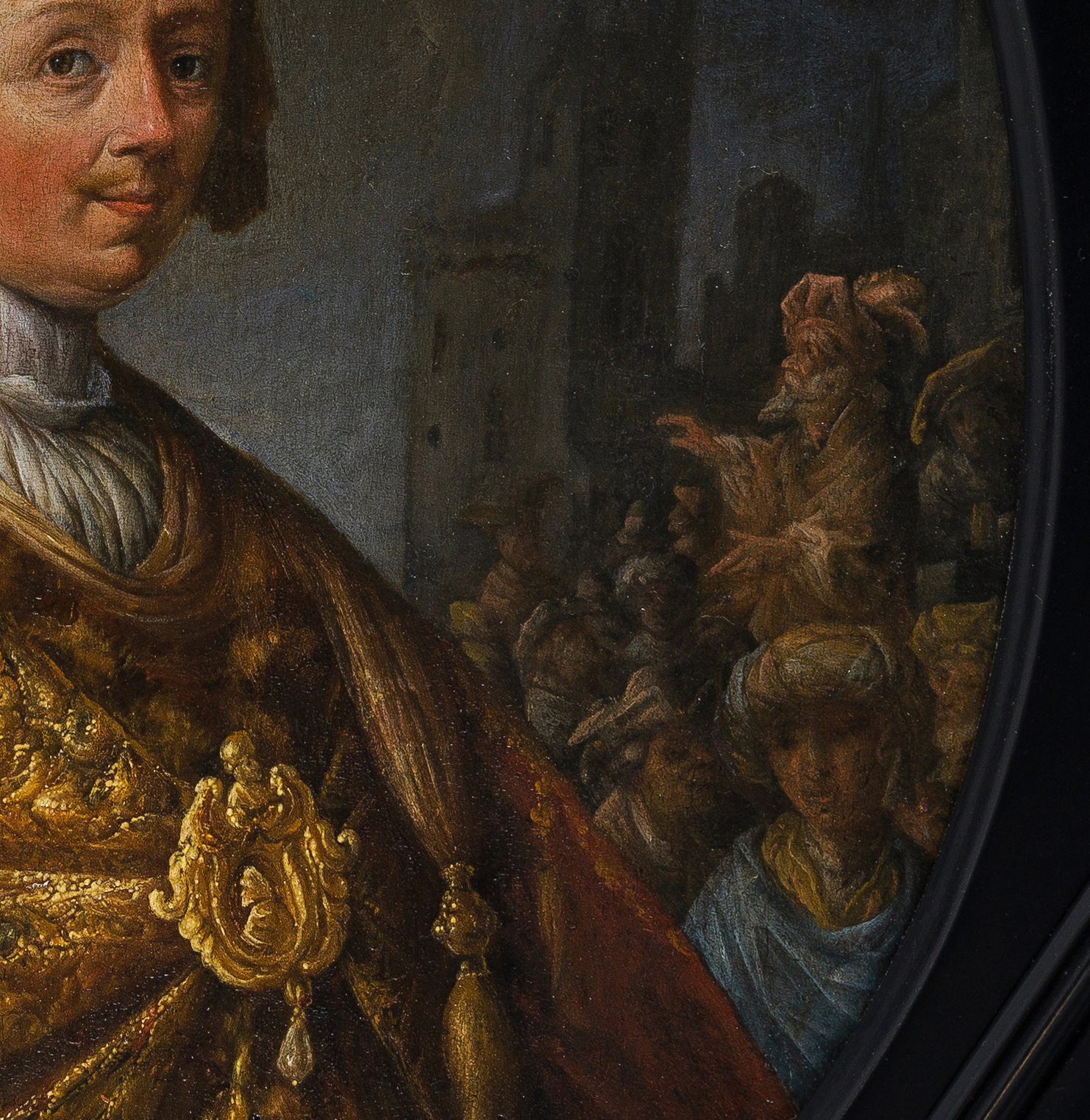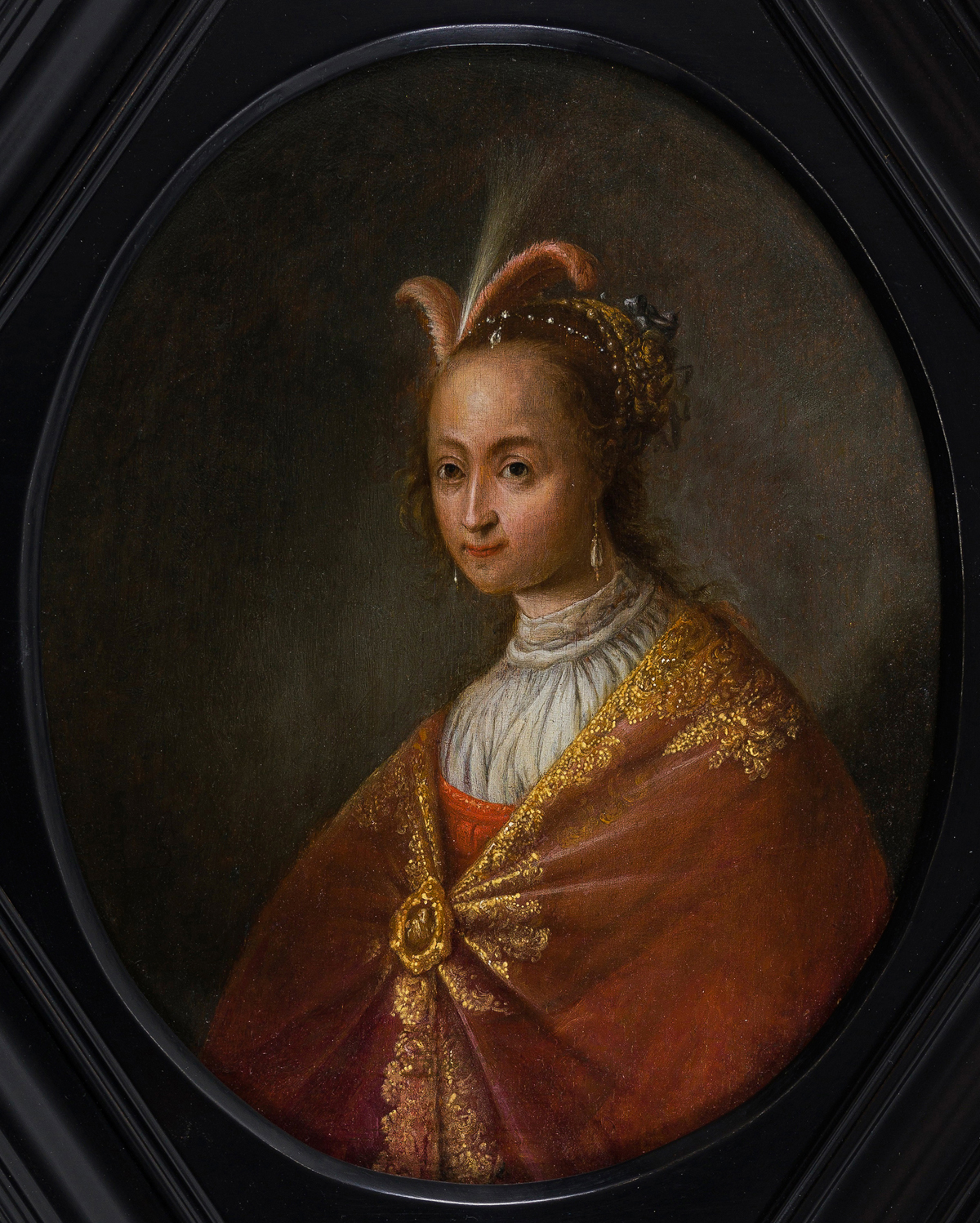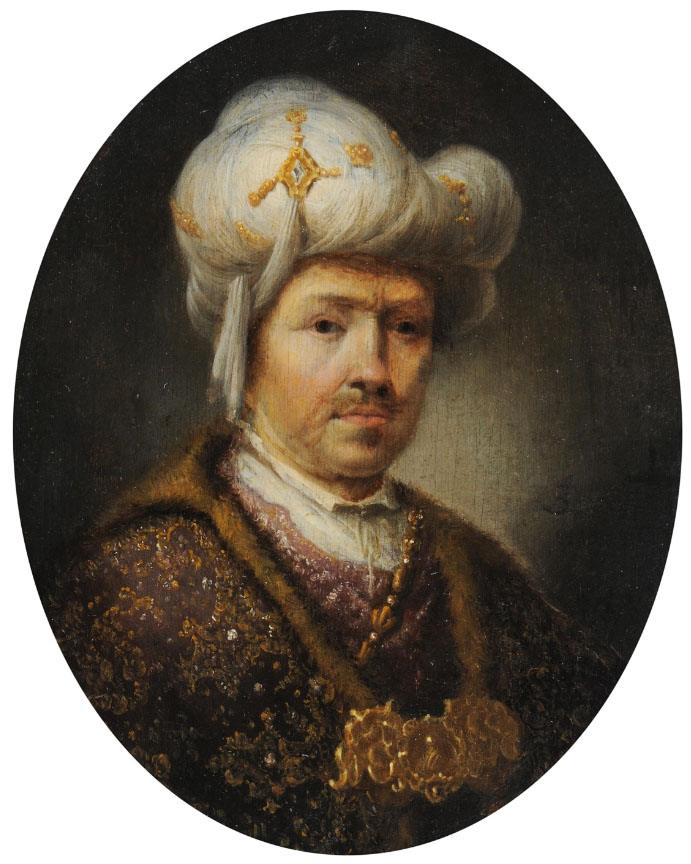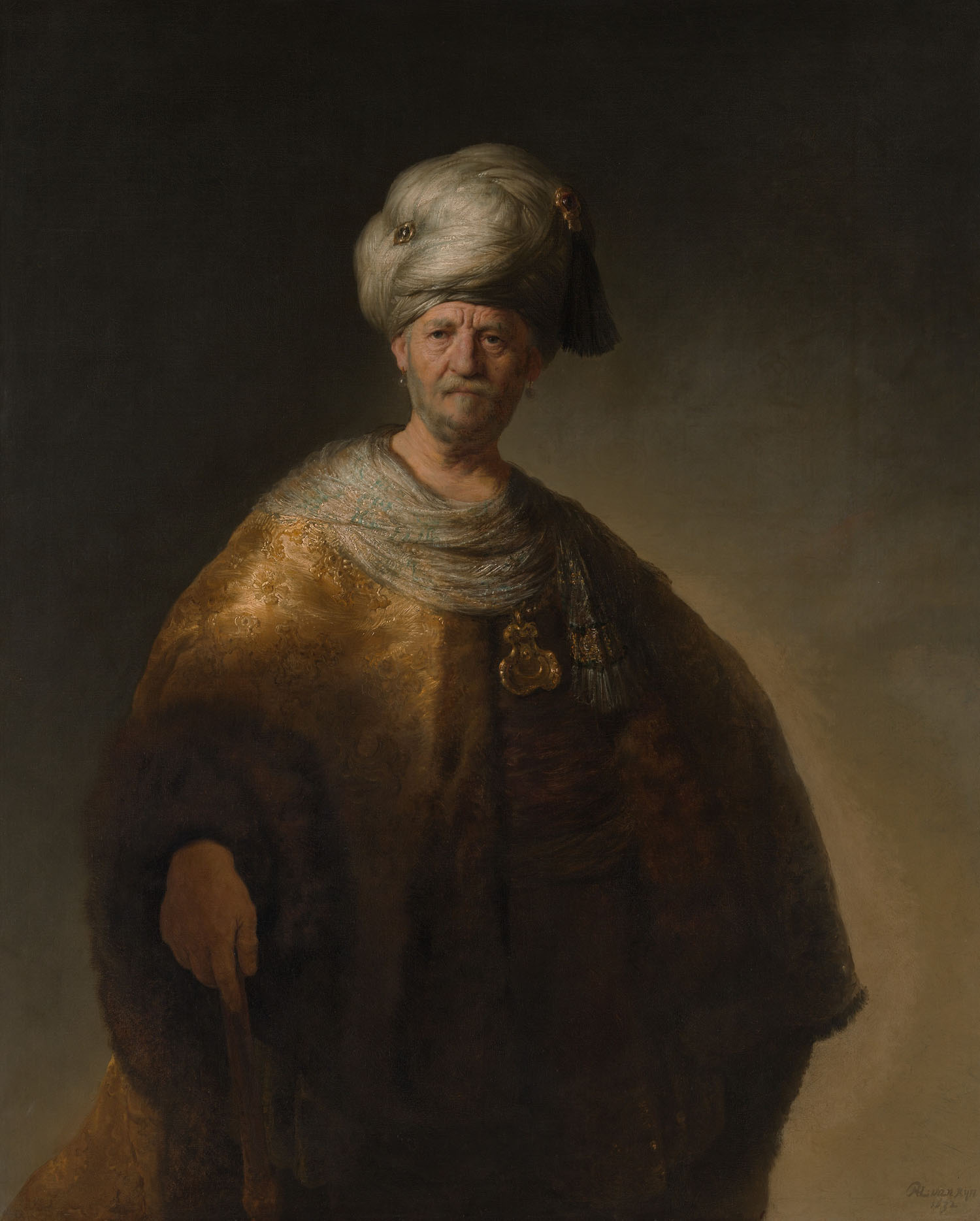JAN ADRIAENSZ VAN STAVEREN (Leiden c.1613 – 1669 Leiden)
Jan Adriaensz van Staveren (Leiden c.1613 – 1669 Leiden)
‘Tronie’ of a Turkish Man and ‘Tronie’ of a Turkish Woman
Both oil on panel, oval, 25.7 x 20.4 cm (10.1 x 8 inch); presented in ebonised octagonal frames with oval slips of 17th-century model
Both signed with monogram ‘JS’ (in ligature, left centre)
Provenance
~ The collection of the lawyer Seger Tierens (1657–1743), The Hague; sold from his collection at auction, 23 July 1743, lot 345: “’t Pourtrait van een Turk, door … van Staveren, ovaal, h. 10d. br 8d.” and lot 346: “Een Turkin, zynde een weerga, door ditto”, together sold for fl. 4.5
~ With Saam Nystad, The Hague, 1982
~ Private collection, Germany
Literature
Werner Sumowski, Gemälde der Rembrandt-Schüler, Landau/Pfalz 1983, vol. V, p. 3116, no. 2161, and the male ‘tronie’ reproduced in colour on p. 3310
***
Jan van Staveren was born in Leiden in 1613 or 1614 as the son of the oil miller and soap boiler Adriaen van Staveren, who became a member of the town council in 1612 and was elected as mayro five times between 1626 and 1646.1 Like his townsman Rembrandt van Rijn, Jan was registered in the Album Studiosorum of Leiden University at the age of fourteen in 1628, although he continued to pursue an artistic training – it is thought he was trained by Gerrit Dou (1613–1675), his exact contemporary, although it might be more likely he trained with a slightly older master. It cannot be excluded that Van Staveren was in the shared studio of Rembrandt and Jan Lievens, which they maintained in Leiden until circa 1633.
In addition to his artistic talents, Jan van Staveren was also an accomplished administrator. Following in his father’s footsteps, he eventually rose to become burgomaster of Leiden in 1667. To that end he followed a career path typical of many young patricians. He started out in 1641 as captain of a civic militia guard, a position he held for eight years. In 1651 he became a member of the city council and by 1656 had served ten terms as alderman. His appointment as mayor was the crowning achievement of his administrative career.
Van Staveren died in April 1669 and was buried in the Pieterskerk in Leiden. He never married, and as his sole heir his sister Alida inherited all his paintings – when they were recorded in 1674 there were 200 paintings, including no less than 72 works by Van Staveren. Although he was professionally trained and of considerable talent, it would appear that the prosperous and successful Van Staveren mostly painted for his own amusement, even though his is now considered among the most talented of the Leiden ‘fijnschilders’.
Van Staveren is known primarily for his genre scenes and portraits. His depictions of hermits in caves are entirely in keeping with the Dou tradition. Among his most charming works are ‘tronies’ of Oriental figures, which were introduced in Leiden by Rembrandt and Jan Lievens around 1630, the subject continued by Gerrit Dou.
The present pair of ‘tronies’ were described as the ‘portraits’ of a Turkish man and woman when they were in the collection of the lawyer Seger Tierens (1657–1743), whose collection was sold at auction in 1743, and also included Jan Steen’s Feast of St Nicholas, among the highlights of the collection of the Rijksmuseum.2 The Venetian and Ottoman Empires had been trading partners since as early as the fifteenth century: Renaissance Venice had a particular interest in representations of the Ottoman Empire in painting and prints. Already during the early Renaissance, Venetian painters – such as Agostino Veneziano and Gentile Bellini – received portrait commissions from Ottoman sultans, and accurate representations of the Ottoman countries were created by Bellini and Vittore Carpaccio, among others. Wealthy Ottomans and Venetians alike collected the exotic wares of their trading partners, and their arts influenced one another. The penchant for imitating aspects of Ottoman art and culture spread throughout the European upper classes, who began to collect luxury goods and enjoyed having their portraits painted in Turkish costumes. This fashion was especially prevalent during the eighteenth century, as seen, for example, in the works of artists such as Jean-Baptiste Vanmour, Joseph-Marie Vien and Jean-Étienne Liotard. In terms of subject matter they are comparable to ‘tronies’ painted by Rembrandt and other artists from his circle, illustrating the fascination by exotic cultures and customs which was typical of the Dutch Golden Age, which witnessed an avalanche of contacts with foreign cultures, both in terms of trade and cultural and scientific interest.
A small number or other Oriental ‘tronies’ by Van Staveren is known, including a pair of oval paintings offered at Christie’s in 20053 and a ‘tronie’ of a turbaned man sold at auction in Switzerland in 2014 (fig).4 They are all closely related to similar works by Rembrandt of the 1630s, for instance his Oriental Man of 1632 in the Metropolitan Museum in New York (fig.).5 Of all Dutch Golden age depictions of such Oriental figures, the present depiction of the male sitter is among the most exuberant and original.
SOLD
1. For the artist, see E.J. Sluijter, M. Enklaar and P. Nieuwenhuizen (eds.), Leidse fijnschilders: van Gerrit Dou tot Frans van Mieris de Jonge 1630 – 1760, exh. cat. Leiden 1988, pp. 226-229, 266-267 and P. Bakker, ‘Jan Adriaensz van Staveren’, in: Arthur K. Wheelock (ed.), The Leiden Collection Catalogue, New York 2017.
2. Oil on canvas, 82 x 70.5 cm, inv. no. SK-A-385; P.J.J. van Thiel, All the paintings of the Rijksmuseum in Amsterdam, Amsterdam 1976, p. 522, repr.
3. Both oil on panel, oval, 17.8 x 13.3 cm, Christie’s, New York, 25 May 2005 (property from the Nelda C. and H.J. Lutcher Stark Foundation) lot 211, repr.
4. Oil on panel, 14.5 x 11.5 cm, Schuler Auktionen, Zürich, Switzerland, 15-20 September 2014, lot 3106. https://rkd.nl/explore/images/278562
5. Oil on canvas, 152.7 x 111.1 cm, inv. no. 20.155.2 (bequest of William B. Vanderbilt, 1920), Walter Liedtke, Dutch Paintings in The Metropolitan Museum of Art, New York 2007, vol. I, pp. ix, 3, 9; vol. II, pp. 554–67, 599, 713, 888, no. 142, colour pl. 142.
